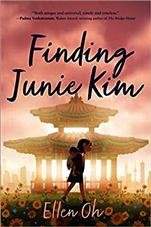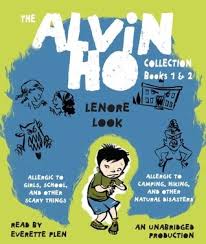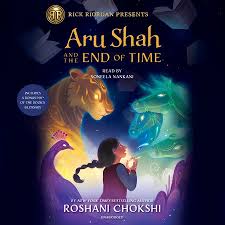Asian Pacific American Heritage Month
Happy May! Teachers (and students!), you are so close to the end of the school year.
Before the school year ends, it is Asian Pacific American Heritage Month! This year, more than ever, it is important to uplift and share AAPI (Asian American Pacific Islander) voices as we are facing a huge increase in hate crimes and anti-Asian sentiment. The Library of Congress hosts this site with lots of teacher resources, both historical and current. Another helpful resource is Standing Together from the Smithsonian Asian Pacific American Center which addresses the need to stand together against rising racism, hate, and violence. This site also provides facts and resources.
Newsela has a lot of articles and text sets that would work for AAPI Heritage Month depending on what you want to focus on. Also, make sure you look at a map! It’s always helpful to talk about what “Asian” actually means, learn about the different regions in Asia, and think about population, religion, languages, food (my personal favorite) and more. I often find students are confused about terminology and appreciate the clarification. For example, I share how I identify (American, Asian American, Indian American, South Asian American, etc.) and how these terms all work for me and they are just more or less specific. We look at different maps to make sure we understand exactly what these terms mean, and I explain my preferences and emphasize that how I chose to identify is unique to me, and you should always ask or let people share with you before you assume.
Last year, Gabby shared this post with some book suggestions for everyone from babies to adults. Here are a few more (new-ish) books that I couldn’t resist sharing that would work for so many purposes. There are so many wonderful books out there, but I challenge you to make sure your AAPI protagonists aren’t all immigrants or focusing on their immigration experience.
Picture books:
Bilal Cooks Dal (cover photo) by Aisha Saeed and Anoosha Syed (illustrator): this one isn’t that new (from 2019), but it is such a wonderful book on multiple levels! First of all, it is very important that everyone knows about dal, it’s eaten by over a billion people and is delicious and so versatile. Also, I love this relatable story about a child who wants to share his favorite food with his friends (and is confused that they don’t already know about it and later scared that they might not like it). And there is a recipe at the back of the book!
What I Am by Divya Srinivasan is a thoughtful and colorful response from a young girl to someone asking her “What are you?” Those of us who’ve gotten that question before and those of us who might have asked someone that question (and just all of us) could benefit from reading about her answers. This would be a great book to start a discussion or exploration about the complex facets of identify and how we can all adapt and change in varied settings.
Love in the Library by Maggie Tokuda-Hall and Yas Imamura (illustrator). This new release is on my “to read” list. It’s based on a true story about love blooming in the library at the Minidoka prison camp during World War II (where Americans of Japanese descent where incarcerated).
Drawn Together: also not that new, but such a gorgeous book! I’ve been waiting to read this book for Grandparents and Special Friends Day at our school for years now, but it keeps being canceled due to the pandemic. But you can use this book in so many ways, the theme of togetherness is not limited to language barriers and students really relate to the drawings and the idea of using your imagination.
Middle Grade/Young Adult:
Finding Junie Kim by Ellen Oh: while there is so much to admire in this book, I loved the element of students fighting back against racism with actions and organization. Parts of the story are dark (mental health struggles, the protagonist learns about her grandparents’ experiences during the Korean War), but it fits with the current times in an honest, realistic, but still hopeful way. Also, it tells an immigration story, but is really a story about someone who is a third generation American, but not always perceived that way, which is an important distinction to share with students.
Last Night at the Telegraph Club by Malinda Lo: set in 1950’s San Francisco, I learned so much from reading this! And couldn't put it down. While this is historical fiction, the injustices in the book really happened. Chinatown is a legacy of days when Chinese and Chinese-American people were not welcome in any other neighborhoods. The “Red Scare” and the discrimination and intimidation that went along with it did involve threats of deportation and taking away citizenship. This is all the backdrop to Lily, the main character, coming of age, grappling with her identities and opposing loyalties, and discovering lesbian culture in San Franciso
Almost American Girl by Robin Ha: this is a fun memoir graphic novel that I read in one day. It is an immigration story, also touches on gender norms and expectations in different cultures.
Adult:
The Fortunes of Jaded Women by Carolyn Huynh: I read this book as an eARC from NetGalley and LOVED it. From my review: There is an amazing cast of characters and we hear from all of them. The shifting narrative is really well done as each character has their own voice which is impressive as there are so many characters. Also, so many funny/relatable moments. I'm not Vietnamese-American, but as the child of immigrants, so many details rang true for me. And I loved all the descriptions of food. There was nothing predictable about this story, but so many things to enjoy: a curse, fortune tellers, lots of family and relationship drama, and other surprises I won't mention because of spoilers. Some of the family reunion scenes made me laugh out loud.
The Verifiers: this is on my “to read” list and has so many things going for it: identity, family expectations, detective agency, potential romance, and a technology twist with a Chinese-American queer protagonist.
Happy Reading and almost summer!











